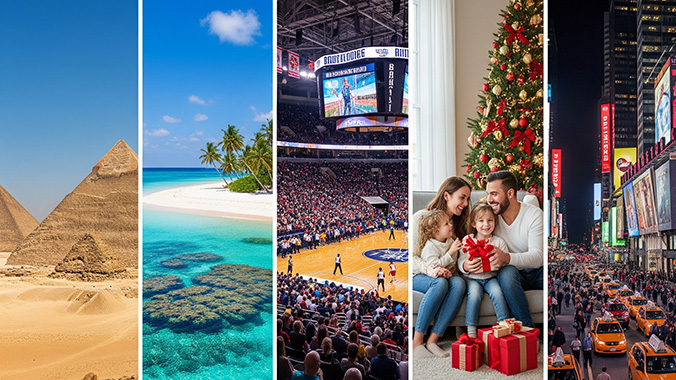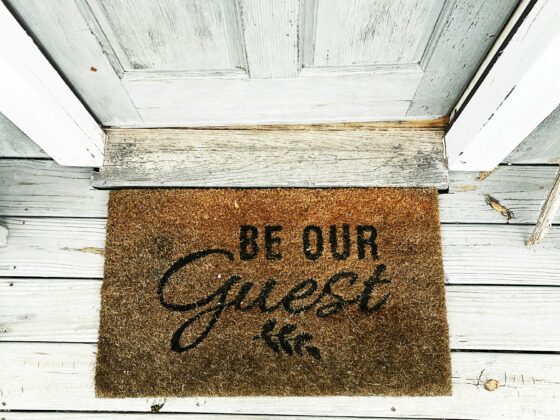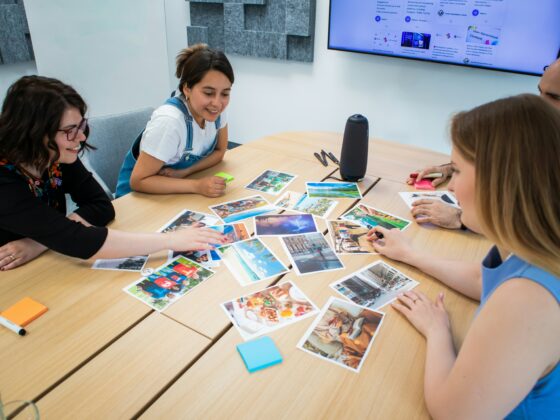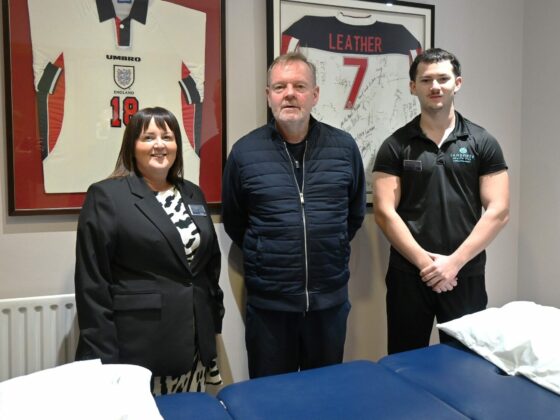
In hospitality, we should be obsessed with the guest journey and map every touchpoint, from the first click on our website to the final checkout. But what if we’re starting the map in the wrong place?
Too many hotels focus on what happens within their four walls. They polish their amenities, refine their food and beverage offerings, and streamline their booking process, believing this is the key to a guest’s heart. While important, these are just pieces of a much larger puzzle.
Effective, truly Guest-Centric Journeys begin with a fundamental shift in perspective. It starts not with our property, but with our place. Before we can understand our guests, we must first have a deep understanding of the one thing that brought them to us: the destination.
Why Are They Really Here?
A guest doesn’t travel hundreds or thousands of miles for a comfortable bed or a fancy lobby. They come for the destination. They are drawn by the promise of ancient ruins, the buzz of a business conference, the thrill of a mountain peak, or the tranquility of a secluded beach. The hotel is not the destination; it is merely a necessary stop for rest and recharging before the next day.
This foundational knowledge is the first, indispensable step towards genuine personalization. By grasping the core appeal of your destination, you can finally connect with the underlying motivations of your guests.
Are they in a Cultural Hotspot like Rome, seeking to walk through history? Or are they in an Emerging Business Hub like Bangalore, looking to close a deal? Is your hotel a basecamp in an Adventure Location like Patagonia or a sanctuary in a Health and Wellness Retreat like Bali?
The answer to this question should dictate everything that follows.
From Observer to Expert: Actionable Steps
Becoming a destination-centric hotel requires a deliberate, internal effort. It’s time to become the leading expert on your location.
- Research Your Destination’s DNA: Go beyond the tourist brochures. Compile a comprehensive profile of what makes your location unique. Identify the key landmarks, cultural experiences, business sectors, major annual events, and hidden local gems.
- Analyze Your Visitor Insights: Use tourism statistics, market research, and your hotel data to understand who visits, when they visit, and why. Develop clear guest personas based on these motivations: the “Cultural Tourist,” the “Business Traveler,” the “Event Attendee,” or the “Leisure Seeker.”
- Assess Travel Accessibility: How do people get to you? Understand the journey by air, rail, or road. Identify the friction points—the confusing transfers, the lack of transport, the late-night arrivals—and ask, “How can we make this easier?”
Weaving the Destination into Your Hotel’s Fabric
Once you have this deep understanding, you can begin to align your entire operation with the destination’s unique draw. This is where the magic happens.
- Align Services with Appeal: In a historic city like Athens, offer curated walking tours or partner with local historians to enhance the experience. In a Business Hub like London, facilitate access to co-working spaces and high-speed business services.
- Plan Around the Local Rhythm: Develop packages and promotions that align with peak seasons, local festivals, or major conferences to capitalize on the local rhythm. A hotel near a Music Festival Location like Coachella could offer “festival recovery brunches,” while one in a Wine Region like Tuscany should have F&B concepts built around the harvest.
- Enhance Convenience: Become a resource. Provide detailed travel guides, robust concierge support for transportation, or form partnerships with local transport providers to smooth over those travel friction points you identified.
- Gather Destination-Related Feedback: Actively ask your guests to rate their overall experience at the destination. Did the hotel help or hinder it? Use this invaluable feedback for continuous improvement.
What Kind of Destination Are You?
The “why” behind travel is incredibly diverse. Understanding which category (or categories) your location falls into is key to unlocking your hotel’s true potential. Consider the vast spectrum:
- Once-in-a-Lifetime Destinations: (The Serengeti, Machu Picchu) – Your role is that of a comfortable, safe basecamp for a profound experience.
- Business Hubs: (New York, Tokyo) – You are an office-away-from-home, a place of efficiency, connectivity, and convenience.
- Cultural Hotspots: (Paris, Kyoto) – You are a cultural interpreter, helping guests access art, history, and culinary delights.
- Leisure & Recreation Centers: (Cancun, Orlando) – You are part of the fun, an extension of the vacation spirit.
- Remote Resorts: (The Maldives, Zermatt) – You are the destination itself, providing a complete, immersive escape.
- Adventure Locations: (Whistler, the Red Sea) – You are the outfitter, providing gear storage, expert advice, and a place to rest and recharge.
- Ecotourism Destinations: (Costa Rica, Kruger National Park) – You are a steward of the environment, facilitating responsible exploration.
- Event-Based Destinations: (Cities hosting the Olympics, Las Vegas) – You are mission control for a specific event, anticipating the unique needs of attendees.
Your Action Plan: 5 Steps to Weave Your Destination into Your Hotel’s DNA
Understanding your destination is the first step, but turning that knowledge into action is what creates a memorable guest experience. Here are five concrete ways to start aligning your hotel with your location today.
- Empower Your Team as Local Ambassadors. Your team is your greatest asset. Move beyond the concierge desk and train every front-of-house employee—from the front desk agent to the bartender—to be a knowledgeable local guide. Encourage them to discover and share their personal favorites: the best coffee shop, a hidden park, a great jogging route, or a unique local boutique. These authentic, unscripted recommendations build trust and create genuine connections.
- Curate Exclusive Local Experiences. Go beyond a rack of tourist brochures. Forge deep partnerships with local artisans, historians, chefs, or guides to create unique experiences available only to your guests. This could be a private, after-hours gallery tour; a cooking class focused on regional cuisine that starts at the local market; or a historical walking tour that begins right in your hotel lobby.
- Infuse “Place” into Your Physical Space. Let your hotel’s atmosphere tell a local story. This is more than just hanging a few scenic photos. Commission and display art from local artists. Create a lobby playlist featuring regional musicians. Stock your bar with local craft beers and spirits. Design a signature dish on your menu using ingredients sourced from nearby farms and highlight their story.
- Transform Your Pre-Arrival Communication. A guest’s journey begins the moment they book. Enhance your standard confirmation and pre-arrival emails. Instead of just repeating logistical information, include a “Taste of [Your City/Region]” section. You could feature a major upcoming event, offer a unique local tip (“Don’t miss the sunset from this spot…”), or provide a link to book one of your curated experiences. This builds excitement and positions you as an insightful guide from the very start.
- Make Your Guests the Guides. Systematically gather destination-specific feedback and use it. Add a question to your post-stay survey like, “What was the one can’t-miss experience you had in our city?” or “What single piece of local advice would you give a future guest?” Utilize these valuable, authentic insights to continually refine your recommendations and compile them into a dynamic, “Guest-Sourced Local Guide” for future visitors.
The Ultimate Competitive Advantage
Guests don’t just book a room; they book an experience. And that experience begins long before they walk through your doors. It starts with the promise of the destination.
The most successful hotels are the ones that understand they are not just in the business of accommodation, but in the business of fulfilling the promise of the destination. By shifting your focus from the inside out, you stop being just another building in a city. You become an essential part of the journey, and in doing so, you become irreplaceable.
Key Takeaways
- Your Destination is Your Primary Product: The fundamental shift is to stop seeing your hotel as the product and start seeing the destination as the core offering. Your hotel is the gateway to that experience.
- Start with Internal Knowledge: True guest-centricity is impossible without first becoming an expert on your location. This internal understanding of “why people travel here” must precede all external marketing and guest-facing strategies.
- Align Everything with Local Appeal: Every aspect of your operation—from staff training and partnerships to your menu and pre-arrival emails—should be intentionally designed to reflect and enhance the destination’s unique draw.
- From Accommodation to Gateway: The most successful and resilient hotels are those that successfully transform their role from being a simple provider of accommodation into being an essential, indispensable part of the guest’s destination journey.






